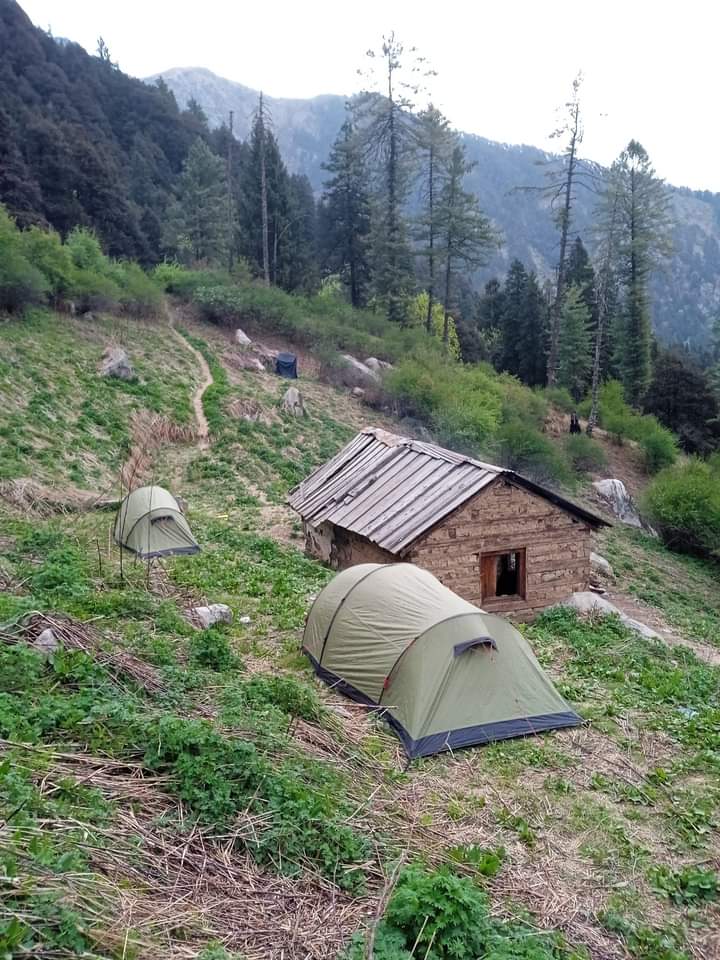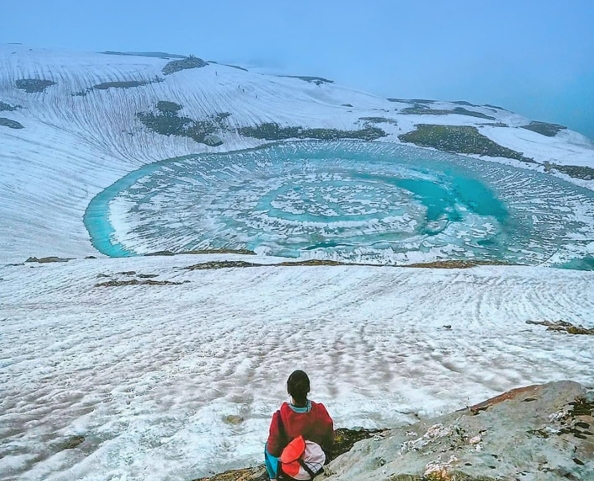Valley of Flowers Trek – Trekking Cougars
Imagine walking through a dream where every step leads you deeper into a colorful ocean of blooming flowers, snow-capped peaks glimmer in the background, and the monsoon mist adds a magical touch to the landscape. Welcome to the Valley of Flowers Trek—a once-in-a-lifetime experience tucked in the heart of Uttarakhand’s Chamoli district.
Recognized as a UNESCO World Heritage Site, the Valley of Flowers is not just a trek, but a journey into India’s most vibrant and pristine alpine valley. Covered in a riot of colors during monsoon, it attracts trekkers, nature lovers, and photographers from all over the world. With Trekking Cougars, you get more than just a trail—you get a guided adventure that connects you with nature, culture, and your inner explorer.
Whether you’re a seasoned hiker or a nature enthusiast looking for your first trek, the Valley of Flowers promises serenity, beauty, and a refreshing break from the chaos of city life.
Where is the Valley of Flowers?

The Valley of Flowers is located in the Chamoli district of Uttarakhand, within the Nanda Devi Biosphere Reserve, and lies at an altitude of around 12,000 feet (3,658 meters). This hidden gem is nestled in the Western Himalayas and stretches over 87.5 square kilometers, making it one of the most spectacular monsoon treks in India.
The valley remains covered in snow during the winter, but from June to early October, it transforms into a colorful carpet of alpine blooms—drawing botanists, trekkers, and wanderers alike.
It is approximately:
- 300 km from Rishikesh
- 20 km from Govindghat (the nearest motorable point)
The trek to the valley begins from Govindghat, making it accessible yet remote enough to retain its untouched charm.
Why is the Valley of Flowers So Famous?
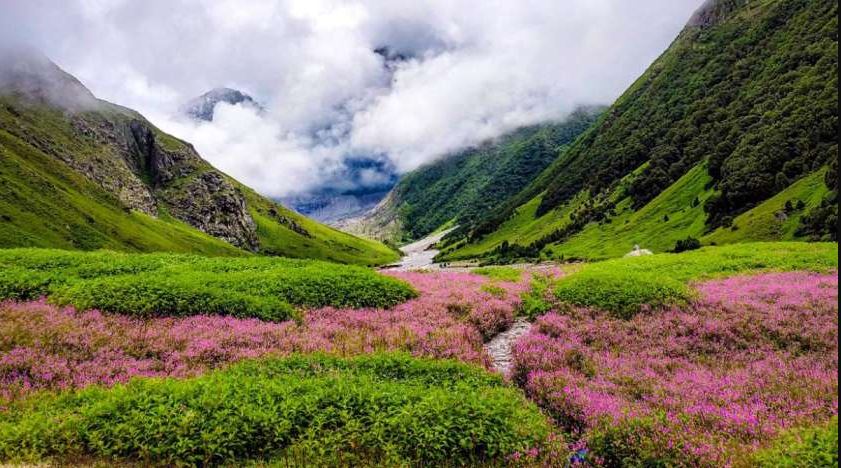
The fame of the Valley of Flowers goes far beyond its aesthetic beauty. Here’s why:
1. UNESCO World Heritage Site
In 2005, UNESCO recognized it as a World Heritage Site for its exceptional natural beauty and biological diversity.
2. Over 500 Species of Flowers
The valley is home to rare and endangered species like:
- Blue poppy
- Brahma Kamal
- Cobra lily
- Himalayan bellflower
- Marsh marigold
It’s truly a botanist’s paradise and one of India’s richest wildflower zones.
3. Spiritual Significance
According to Hindu mythology, the valley was believed to be the place where Hanuman found the Sanjeevani herb during the Ramayana. Locals regard it as a mystical land blessed by the gods.
4. Perfect for Monsoon Trekking
While most Himalayan treks are avoided during the rains, the Valley of Flowers flourishes in monsoon, offering an exclusive experience that only a few treks can match.
Best Time to Visit – Why Monsoon is Perfect
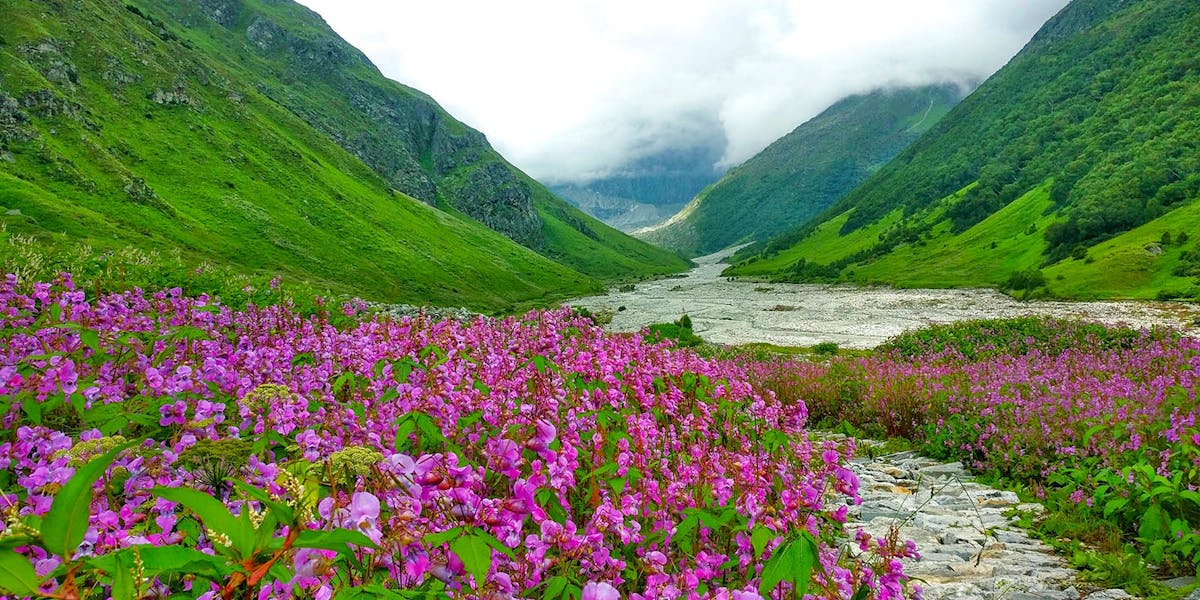
The best time to trek to the Valley of Flowers is between mid-July and mid-August, when the bloom is at its peak. This period is ideal for:
- Color Explosion – Flowers of every shade bloom vividly.
- Monsoon Magic – The mist and light rain enhance the dreamlike feel.
- Photography – Ideal lighting and colors for nature photography.
Trekking Cougars recommends planning your trek in late July or early August to witness the full bloom in all its glory.
Trekking Route: How to Reach Valley of Flowers
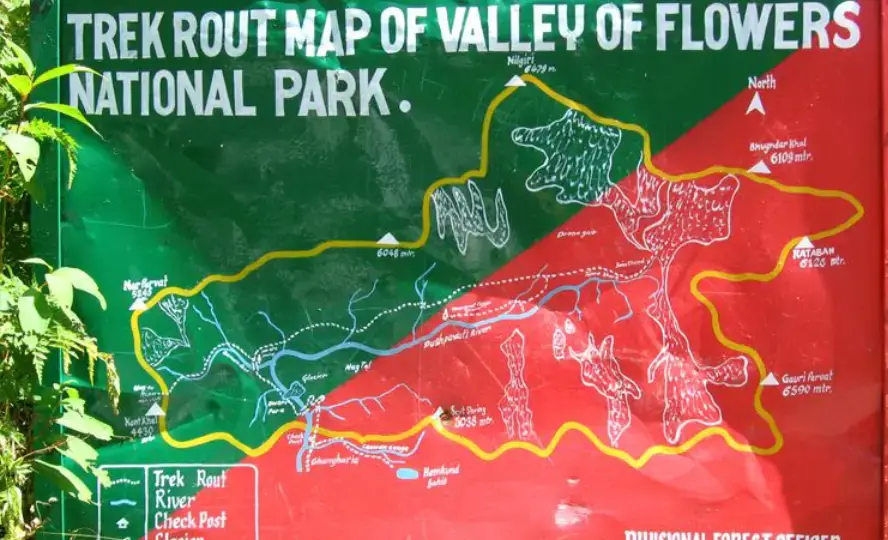
Getting to the Valley of Flowers involves a beautiful combination of road travel and trekking. The journey is as fulfilling as the destination, offering breathtaking views, gushing rivers, and quaint Himalayan villages.
Step-by-Step Travel Itinerary:
1. Reach Rishikesh / Haridwar (by Train or Road)
These are the nearest major towns connected to Delhi and other Indian cities by rail, road, and buses. From here, your road journey to the Himalayas begins.
2. Drive from Rishikesh to Govindghat (Approx. 10-11 Hours | 270 km)
Govindghat is the base camp for the Valley of Flowers trek. On the way, you’ll pass scenic towns like Devprayag, Rudraprayag, and Joshimath. The road trip is thrilling, running along the Alaknanda River.
3. Trek from Govindghat to Ghangaria (Approx. 9 km Trek)
- The actual trekking begins here.
- The trail is moderately steep and paved.
- Mules and porters are available for those who need assistance.
- Night stay at Ghangaria, a small settlement with basic lodging and food.
4. Trek from Ghangaria to Valley of Flowers (Approx. 3.5 km One Way)
- The trail to the Valley of Flowers diverges from the Hemkund Sahib route.
- The path is natural, lined with wildflowers, streams, and wooden bridges.
- You will spend several hours exploring the valley and then trek back to Ghangaria the same day.
5. Return Journey
You’ll follow the same route back: Ghangaria → Govindghat → Rishikesh/Haridwar.
Difficulty Level and Trek Duration
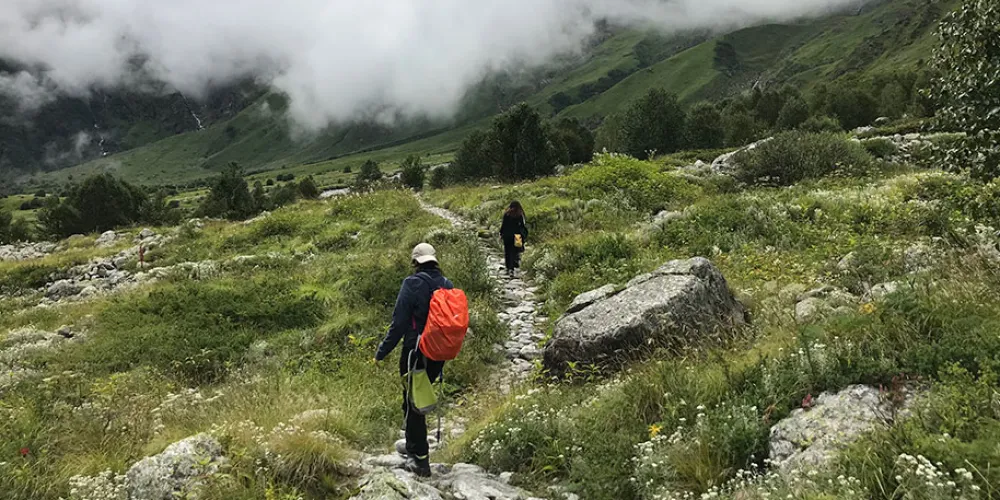
The Valley of Flowers trek is moderate in difficulty and perfect for beginners with decent physical fitness. It doesn’t require any technical climbing or alpine gear.
Key Stats:
-
Total Trek Distance: ~20 km (excluding return)
-
Max Altitude: 14,400 feet (Valley top)
-
Best for: Nature lovers, first-time trekkers, families, photographers
You should be able to complete the entire trip in 5 to 6 days, including travel from and to Rishikesh.
Recommended Itinerary:
| Day | Plan |
|---|---|
| Day 1 | Rishikesh to Govindghat (Drive) |
| Day 2 | Govindghat to Ghangaria (Trek) |
| Day 3 | Ghangaria to Valley of Flowers and back |
| Day 4 | Optional: Hemkund Sahib Trek or rest |
| Day 5 | Ghangaria to Govindghat (Trek), Return journey begins |
| Day 6 | Govindghat to Rishikesh (Drive) |
Flora and Fauna of the Valley
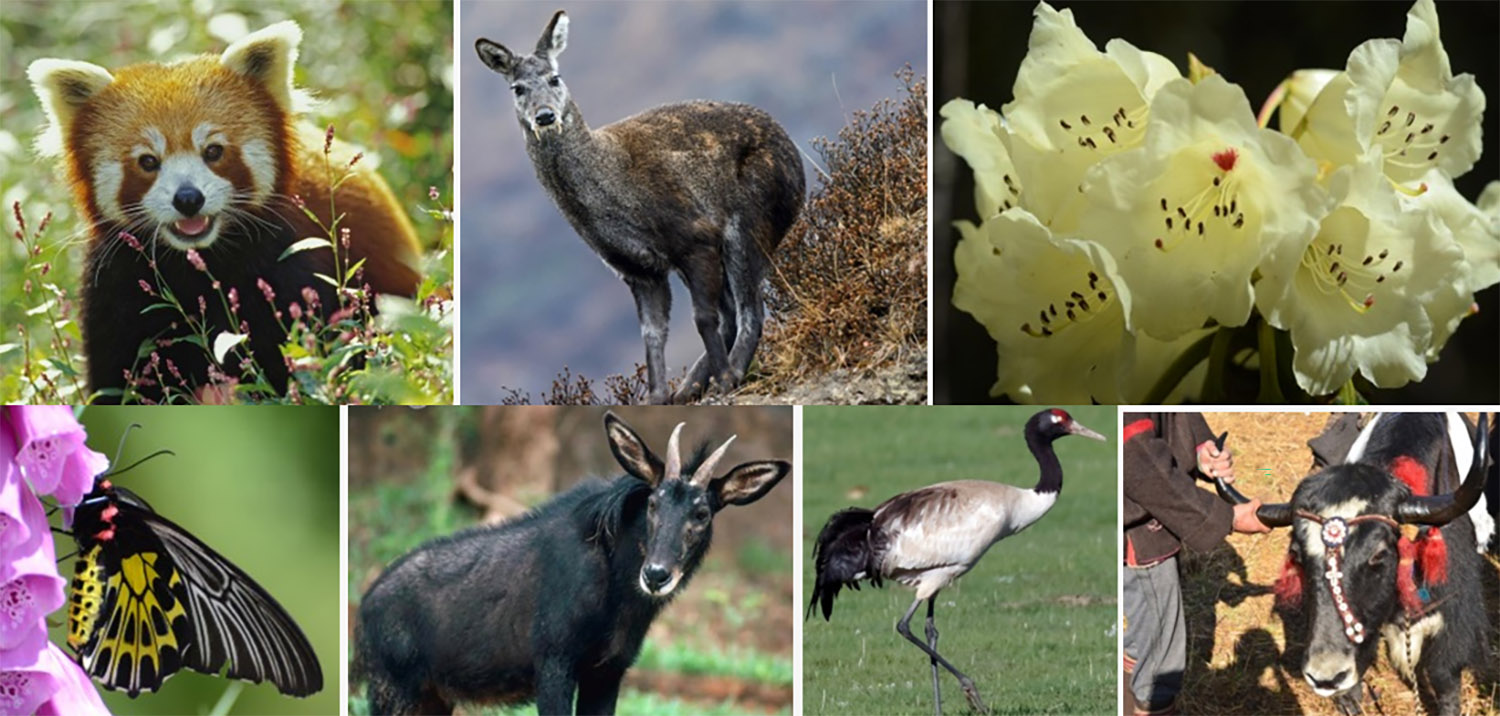
This alpine valley is a biological hotspot, home to over 500 flowering species, many of which are endemic or endangered.
Prominent Flowers:
- Blue poppy (Meconopsis)
- Himalayan bellflower
- Marsh marigold
- Dwarf rhododendron
- Cobra lily
- Brahma Kamal (found near Hemkund Sahib)
Wildlife:
- Himalayan black bear
- Snow leopard (rarely sighted)
- Musk deer
- Pika (Himalayan rodent)
- Monals and other Himalayan birds
Packing List and Weather Tips

Weather:
- July-August: 7°C to 15°C
- Rain is common—expect occasional downpours
- Nights can be cold at higher altitudes
Must-Pack Items:
- Waterproof trekking boots
- Raincoat/poncho and backpack cover
- Warm inner layers
- Trekking poles
- Energy bars and ORS
- Sunscreen and lip balm
- Reusable water bottle
Cultural Significance and Nearby Attractions

Hemkund Sahib (15,200 ft)
Just 6 km from Ghangaria, Hemkund Sahib is a high-altitude Sikh pilgrimage site. You can visit it on a spare day.
Nanda Devi National Park
Adjacent to the valley, this park is another UNESCO World Heritage Site and offers more rugged terrain and rare fauna.
Why Valley of Flowers is Among the Best Monsoon Treks
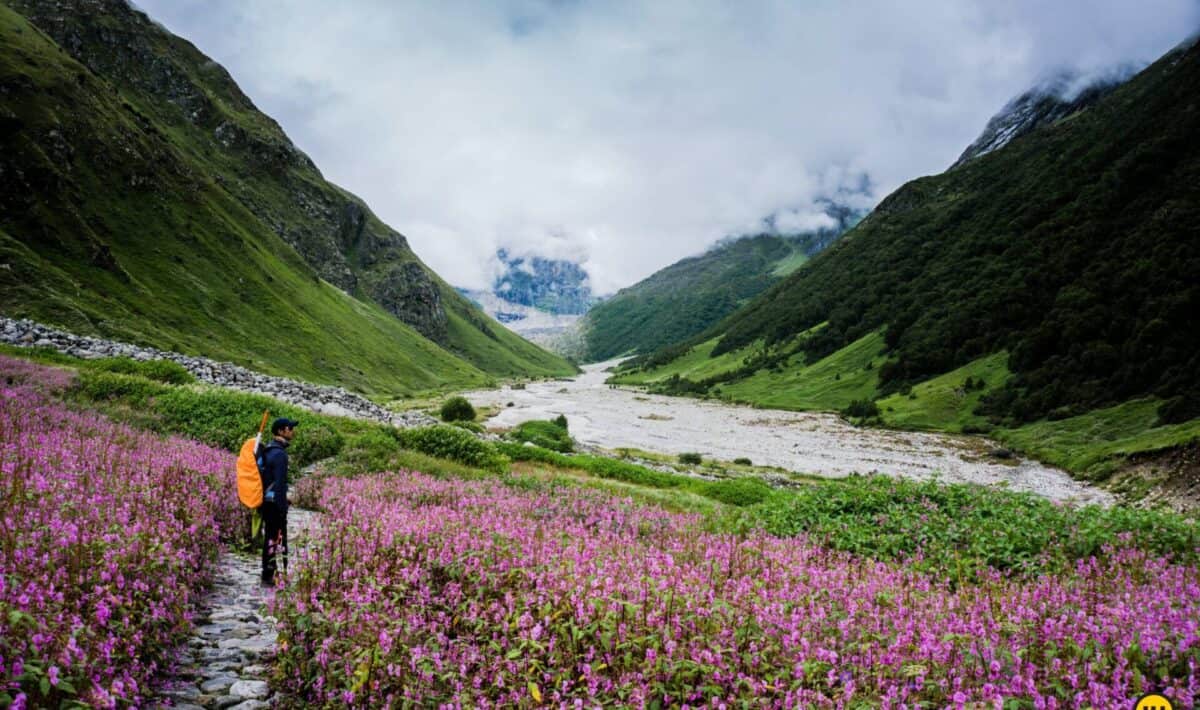
When it comes to monsoon treks, nothing matches the Valley of Flowers in terms of color, ease of access, and biodiversity. While other treks become slippery or dangerous in rain, this one comes alive with blossoms and misty magic.
- Minimal landslide-prone sections
- Professionally marked paths
- Lodging available at Ghangaria
- No river crossings or glacier walks
This is why it stands out among all Himalayan monsoon treks—especially for nature lovers and first-time trekkers.
How Trekking Cougars Makes It Easy for You
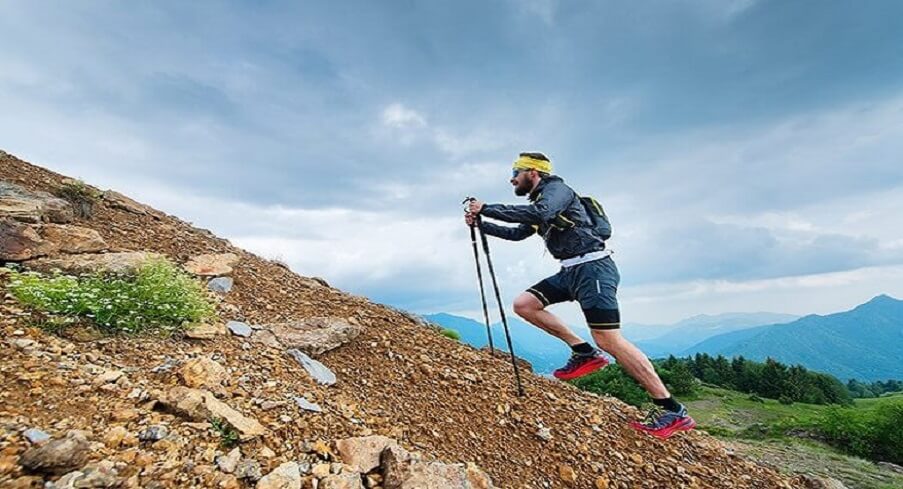
At Trekking Cougars, we offer complete support for your Valley of Flowers Trek, including:
- End-to-end travel coordination from Rishikesh/Haridwar
- Comfortable stays at Govindghat and Ghangaria
- Trained trek leaders and first-aid support
- Custom group treks and photography tours
- Responsible trekking practices
Whether you’re solo, with friends, or planning a group outing, we ensure that your trek is smooth, memorable, and safe.
Sustainable Trekking Tips
To preserve this UNESCO-protected natural treasure, we encourage every trekker to follow eco-conscious trekking practices:
- Carry reusable bottles and utensils
- Do not litter—bring your waste back
- Stick to marked trails to avoid trampling flora
- Avoid chemical-laden products in water sources
- Support local vendors and homestays
Let’s keep the Valley of Flowers as pristine for future generations as it is today.
Conclusion: Embrace the Blooming Dream
.jpg)
If you’re looking for monsoon treks that leave an imprint on your soul, the Valley of Flowers Trek is your answer. From spiritual vibes to floral fantasies, it’s a journey of connection—with nature, culture, and self.
With the guidance and expertise of Trekking Cougars, you’ll experience this natural wonder not just as a trekker, but as a traveler who truly belongs in the wild.
So lace up your boots, pack your rain gear, and let the valley welcome you with its wild, blooming heart.




